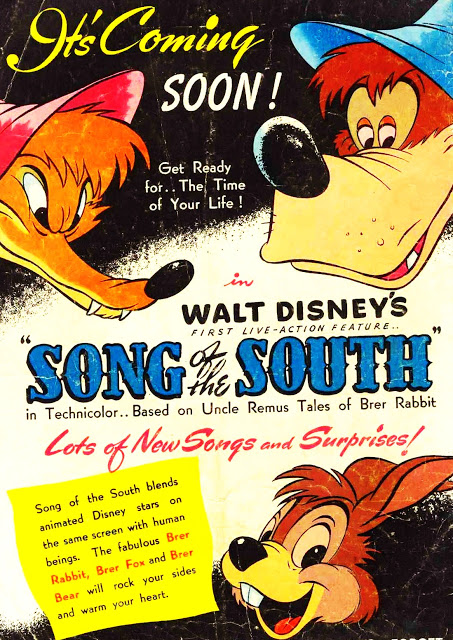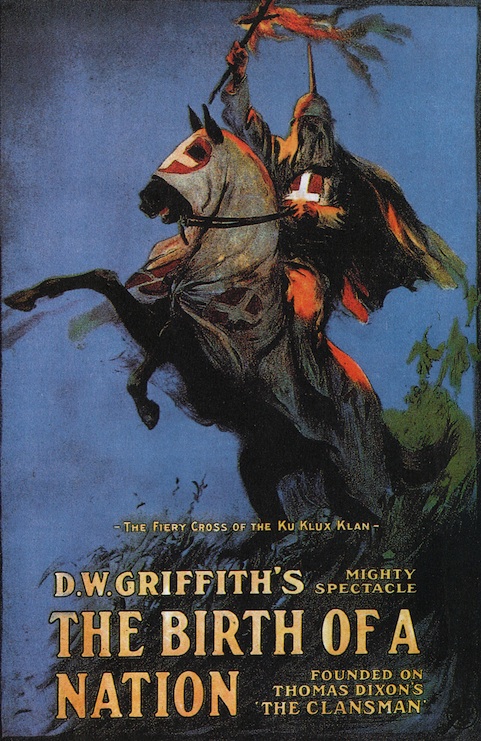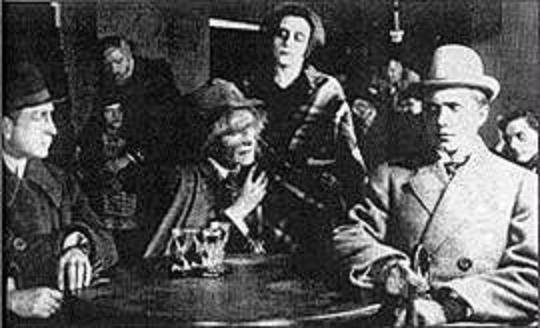One of the things I get asked frequently is if I’ve seen the worst film ever made. The given answer, since The Golden Turkey Awards came out, is that the worst film ever made is Plan 9 from Outer Space (1959). That’s not a great picture, but the worst?
Being a film historian, I’m also supposed to know the greatest film ever made, and I don’t know what that is either. There’s no such thing as a perfect film. They all have problems. For example, the worst cutting continuity I’ve ever seen is in The Ten Commandments (1956), which is considered a classic. There are more mismatched cuts in that film than I’ve ever seen. It leaves Plan 9 in the dust, and Plan 9 isn’t very good.
I’ve often said that Plan 9 isn’t even the worst Ed Wood film. It’s not the worst Bela Lugosi film. There are films with special effects that are not as good. It’s not particularly ambitious and it manages to miss most of its goals, but it hangs together as a film.
The most charming thing about Plan 9 is the tin-eared dialogue that Ed Wood manages to infuse in the proceedings. It’s the kind of dialogue that an actor can’t read at all, even though it may look OK on the page. It forces the performances to be wooden and strange, and it makes them funnier than they should be.
(Aside: Filmmaker Larry Blamire is an ace at imitating and spoofing Ed Wood-style dialogue, and people have criticized him for it. I’ve read numerous clueless reviews that accuse his films of trying to be bad. They are not trying to be bad. They are spoofing the style of movies from the 1950s. They’re taking it a notch higher and making it funny. I can’t understand why people get this with Airplane! (1980) which spoofed the deadpan over-the-top style of airport disaster movies, but they often miss it with Blamire’s films. End long aside.)
Plan 9 is basically trying to be a mixture of The Day the Earth Stood Still and a zombie/walking dead film. It contains the dire warnings from the aliens and the ghoul trappings from other pictures. The special effects are bad, the dialogue is bad. The editing is world-class terrible, but not the worst I’ve seen. (See the article I wrote on this years ago). But the script itself isn’t too bad. The concept is OK. The actors do a decent job, although not spectacular (Mona McKinnon is a special exception… she’s awful.) The sets are passable, although they look cheap, because, well, they are.
But if you want to see a worse Ed Wood film, watch Glen or Glenda. There are large swaths of it that don’t even make sense. You could cut Bela Lugosi’s scenes out of it and never know they were gone. If you want to see a film with worse acting in it, geez, there are a lot of them. If you want to see a film with worse special effects, how about Robot Monster (1953), which has a few shots of the “space platform” that are truly laughable? Or maybe The Lost City (1935) with a few shots of a model ship that wouldn’t fool a five-year-old.
The thing I admire about Ed Wood, and I truly do admire it, is that he got these films made. He got them released. It’s a difficult thing to do that. For every one film that is made, there are a hundred that were started and not finished. For every one not finished, there are probably 10,000 that were never started. There’s a big part of me that scoffs at people who say they could have made a better film than Ed Wood. My answer is the same as what I often say when people criticize my own work: “Yes, but you didn’t.”
I’m not trying to defend Ed Wood here. His films are pretty bad, but he made it through meetings with stupid producers, financing people, editors, actors, cinematographers, lighting guys, studio renters, effects guys, and all the other people you have to deal with, and he did it. And not only did he do it, but he did it with almost no money. It’s an admirable thing that he could do it at all.
I’ve been going through the work of director Bud Pollard lately. (Full disclosure: I’m considering doing a Blu-ray of his Alice in Wonderland [1931] and the surviving footage of The Horror [1933].) Bud’s films are every bit as bad as Ed Wood’s. The acting is, in general, worse. The sound recording is worse than Wood’s. The makeup is inexcusable. The cinematography ranges from decent to terrible. But Pollard did this 25 years before Wood did, and he got all of this done when it was a lot harder technically to make a sound film at all. On one level, you’ve got to respect the achievement.
Alice is, however, still laughably bad. The lead actress has a wig that would embarrass even William Shatner… one person ran out of the room screaming when I ran it and another told me it gave him a headache. But still, Pollard got this made. For what it’s worth, The Horror or at least what survives of it, is much worse and has even more problems… and it’s not entirely clear whether that was released or not.
The bottom line is that all of these films are entertaining. They may not be classics, but they’re fun to watch. It’s enjoyable to see what these guys did with no money and how they worked with it. I respect this immensely. I love to sit through a “bad” film now and then just to see how they’re put together. It’s one of the reasons I restore things like King of the Kongo. I know no one else will touch them.
Then there are the films that are made with a cynical intent to cash in on something. The 1967 Casino Royale is a fun mess, but a misfire intended to exploit on the James Bond craze. 1950’s Rocketship XM loses points with me for being an attempt to seize the publicity around Destination: Moon. It’s a decent enough picture, though. Then there are things like Weird Science and My Science Project, both intended to ride the wave of PR that was to be generated by Real Genius (1985). Real Genius tanked because those two films preceded it into release and made everyone think it, too, was junk.
Another case in point: Bela Lugosi Meets a Brooklyn Gorilla (1951). This movie is terrible. I mean, it’s really, really terrible. Apparently, the motivation was to use these two guys (Duke Mitchell and Sammy Petrillo) who had an act imitating Dean Martin and Jerry Lewis and to put them in a faux Martin/Lewis film. The hope was that Paramount and Hal Wallis would see the film and pay to have the negative destroyed, which it wasn’t. I’ll admit that I’m not a big fan of Martin and Lewis. Their comedy seems a little desperate and forced to me, and I know it’s a minority opinion. I like the way their movies are made, and I respect the performers a lot, but I just don’t find them especially funny.
Mitchell and Petrillo, on the other hand, are painful. Petrillo looks almost like a clone of Lewis, but he’s nowhere near as talented on any level. Mitchell is a decent singer. I can give him that, but he has no comic timing at all. Poor Bela Lugosi looks sick and doesn’t understand what he’s doing in the film. Frankly, I don’t either. The bottom line is that this is a train wreck. It’s not really even entertaining. You just watch it with your mouth open.
But, for me, the bottom of the barrel are these films that should really be tons better than they are. A lot of people will tell you that Ishtar (1987) is terrible, which it isn’t. It was handled by a director (Elaine May) who was used to shooting lots of footage of ensemble players, and when she had to do that with a picture that required action and had two expensive stars in it, the movie went over budget. But still, there are a lot of laughs in Ishtar. It’s full of good moments and clever repartee.
How about The Island of Dr. Moreau (1996)? This is an awful film. With uneven special effects, and terrible performances, topped off by in incomprehensible script. The 1932 Island of Lost Souls is pretty good. The 1977 remake Island of Dr. Moreau isn’t very good, but it’s light years ahead of the 1996 version. The newer film stars a bloated Marlon Brando having an attitude attack about being in a film at all, with Val Kilmer having an attitude attack about being upstaged by Brando. The film had a troubled production history, with bickering stars and directors, finally being helmed by none less than John Frankenheimer, who should have known better. You’ve got a boatload of top talent in this film, and it adds up to a complete mess.
Another total loss: Battlefield Earth (2000). OK, this movie is awful. I suppose the special effects are decent-ish, but John Travolta and Forest Whitaker are over the top in the worst possible way. The script is a total disaster, full of improbable coincidences and plot holes you could pilot the Titanic through. Director Roger Christian has had an undistinguished career as a director (although he’s a top art director), but I get the feeling that this film was going down the tubes before they ever called him.
And ultimately, I find these less excusable than Ed Wood’s pictures. These guys had everything. Money, actors, cinematographers, screenwriters, top studios, and they still couldn’t make a decent film. You wonder what Wood could have achieved with similar funds. It certainly couldn’t have been worse, and maybe it would have been entertaining.
I’m going to be discussing a bit more about this in some upcoming blogs. It’s easy to make fun of a bad movie, but it’s really hard to make one. It’s like those painful assignments you used to get in social studies class. You’re thrown together with people who have to work in a group (in this case, it’s all the actors and behind-the-camera people you need to do the work.) If you happen to get a group of all of the smart kids, you can do well. But if you get one kid who screws up and doesn’t do his job, the whole group can look bad. Even then, sometimes the smart kids make a bad project, and the kids who sit in the back and sleep come up with a winner once in a while. You just never know.



